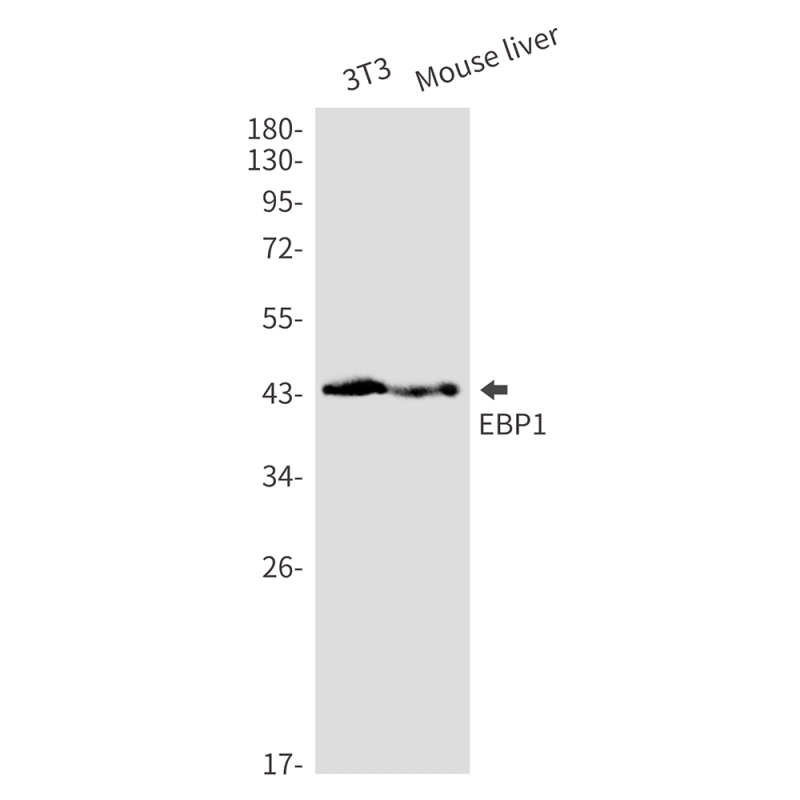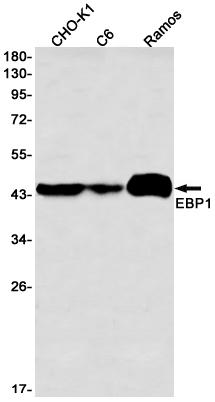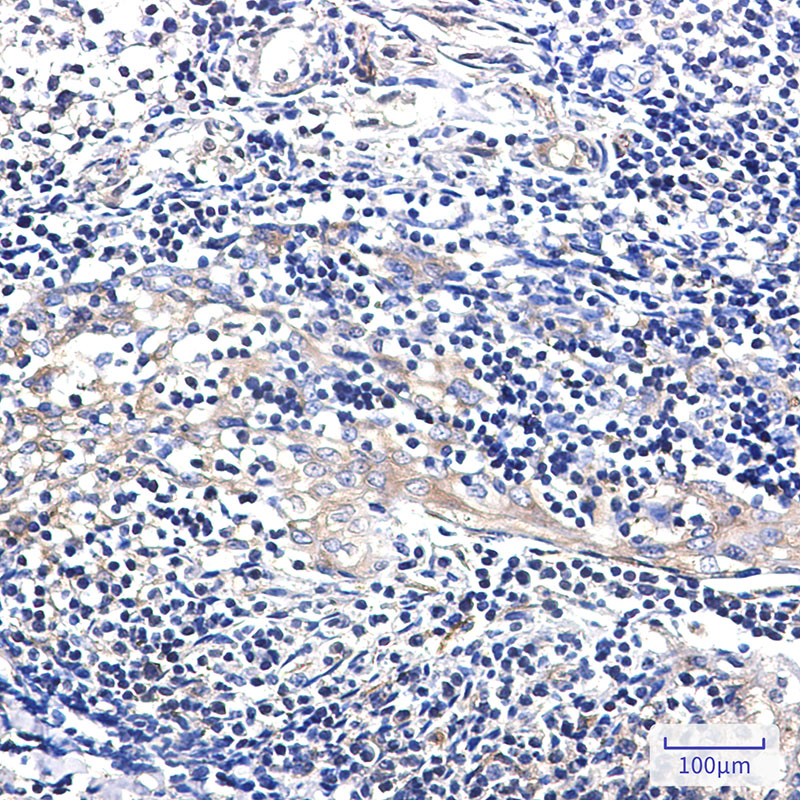


| WB | 1/500-1/1000 | Human,Mouse,Rat,Hamster |
| IF | 1/20 | Human,Mouse,Rat,Hamster |
| IHC | 1/50-1/100 | Human,Mouse,Rat,Hamster |
| ICC | 技术咨询 | Human,Mouse,Rat,Hamster |
| FCM | 咨询技术 | Human,Mouse,Rat,Hamster |
| Elisa | 咨询技术 | Human,Mouse,Rat,Hamster |
| Aliases | PA2G4; EBP1; Proliferation-associated protein 2G4; Cell cycle protein p38-2G4 homolog; hG4-1; ErbB3-binding protein 1 |
| Entrez GeneID | 5036 |
| WB Predicted band size | Calculated MW: 44 kDa; Observed MW: 44 kDa |
| Host/Isotype | Rabbit IgG |
| Antibody Type | Primary antibody |
| Storage | Store at 4°C short term. Aliquot and store at -20°C long term. Avoid freeze/thaw cycles. |
| Species Reactivity | Human,Mouse,Rat,Hamster |
| Immunogen | A synthetic peptide of human EBP1 |
| Formulation | Purified antibody in TBS with 0.05% sodium azide,0.05%BSA and 50% glycerol. |
+ +
以下是3篇关于EBP1抗体的虚拟参考文献示例(实际文献需根据具体研究补充):
---
1. **"EBP1 regulates cell proliferation and apoptosis in breast cancer via AKT/mTOR signaling pathway"**
*Zhang Y, et al. (2020)*
摘要:本研究利用EBP1特异性抗体,通过Western blot和免疫组化技术,发现EBP1在乳腺癌组织中高表达,并通过调控AKT/mTOR通路影响肿瘤细胞增殖和凋亡,提示其作为潜在治疗靶点。
2. **"Characterization of EBP1 interaction with ErbB3 receptor using co-immunoprecipitation assays"**
*Lee S, et al. (2018)*
摘要:作者开发了一种高特异性EBP1多克隆抗体,验证了EBP1与ErbB3受体的直接结合,并揭示其在受体酪氨酸激酶信号转导中的调控作用,为靶向治疗提供实验依据。
3. **"Structural analysis of EBP1 protein isoforms in prostate cancer progression"**
*Wang H, et al. (2019)*
摘要:通过EBP1抗体识别不同剪接变体,发现EBP1-p42亚型在前列腺癌转移中显著上调,且与患者预后不良相关,表明其可作为癌症分期的生物标志物。
---
注:以上为模拟文献,实际引用需以真实发表的论文为准。建议通过PubMed或Google Scholar以关键词 **"EBP1 antibody"** 或 **"ErbB3 binding protein 1"** 检索最新研究。
The ErbB3-binding protein 1 (EBP1), also known as PA2G4. is a ubiquitously expressed protein encoded by the PA2G4 gene. Initially identified as a binding partner of the ErbB3 receptor tyrosine kinase, EBP1 plays multifaceted roles in cell proliferation, differentiation, and apoptosis. It exists in two major isoforms, p48 and p42. generated via alternative splicing, with p48 predominantly localized in the cytoplasm and p42 in the nucleus. EBP1 interacts with multiple signaling molecules, including the PI3K/Akt and MAPK pathways, and modulates transcription by binding to RNA or DNA, influencing genes involved in cell cycle regulation and survival.
In cancer, EBP1 exhibits context-dependent roles, acting as either a tumor suppressor or promoter. It is frequently dysregulated in malignancies such as breast, prostate, and gastric cancers. Studies suggest its involvement in chemoresistance and metastasis, making it a potential therapeutic target.
EBP1 antibodies are essential tools for detecting protein expression, localization, and interactions in research. They are widely used in techniques like Western blotting, immunohistochemistry, and co-immunoprecipitation to explore EBP1's functional mechanisms in disease models. Commercial antibodies often target specific isoforms or post-translational modification sites, aiding in elucidating EBP1's diverse roles in cellular homeostasis and pathology.
×